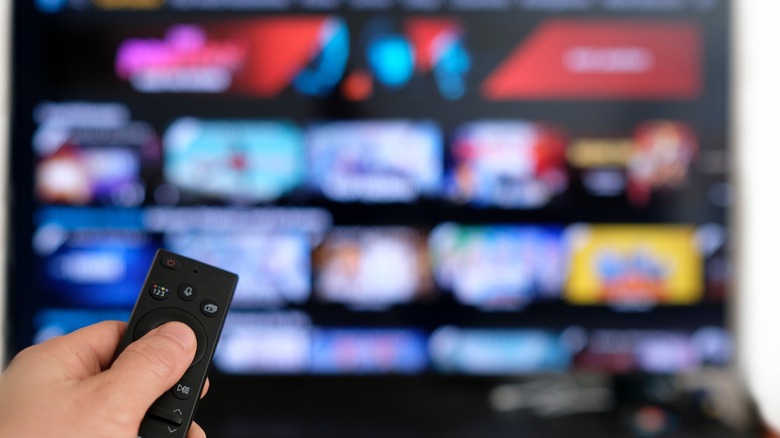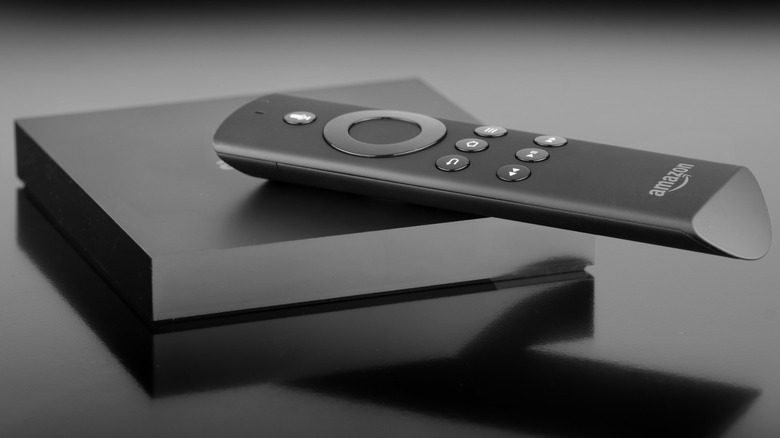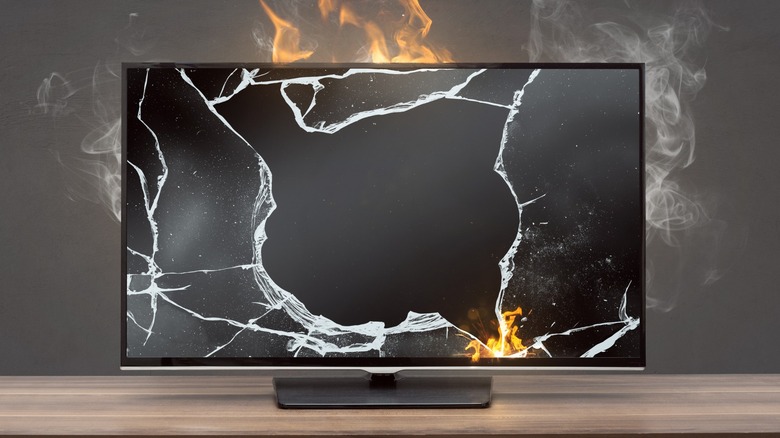What To Know Before Resetting Your Amazon Fire TV Device
With the switch from cable television to streaming, we rely heavily on digital media players and smart TVs to deliver our daily dose of entertainment. Amazon's Fire TV devices, from the small Fire TV stick to the dedicated smart TV, connect users with their favorite streaming apps in a convenient, often easy-to-use package. Unfortunately, even the most intuitive or consumer-friendly device is destined to have a hiccup.
Maybe the audio stopped working or apps aren't loading properly. Whatever the issue, while troubleshooting, if all provided steps don't work, you'll likely be instructed to reset the Fire TV device and bring it back to factory settings. But what exactly does that mean, and what will it ultimately do to your Fire TV device? Before you go through the simple process of resetting your Fire TV, let's see what you're in store for when resetting your Amazon Fire TV device and how a reset may, or may not, help.
You'll need the Amazon login credentials
The biggest thing to understand about factory resetting your device is that it brings it back to a brand-new state; it will be like it was just taken out of the box, so all of your apps and content will be wiped clean from memory. That also means your login credentials won't be saved, so it's vitally important that you ensure you know the correct Amazon login that's associated with your Fire TV device before factory resetting.
Once you initiate a reset, the only way to retrieve everything easily is by logging into your Amazon account after the device reboots. Keep in mind that it's not just any Amazon credentials — they have to be those of the individual who set up the Amazon Fire TV if you want all of the same apps to be redownloaded. So, if that's another person in your household, be sure to secure their login before resetting.
Note that if you own certain Fire TV models, such as the third-generation Cube, you also have the option of connecting a USB flash drive to the device and backing up the data to that drive. To do that, connect the flash drive via the USB port, then navigate to Settings, Applications, and then Manage Installed Applications. Select the apps with data that you want to save, then click the "Move to USB Storage" option.
Resetting may not fix the problem
After you've gone through any troubleshooting steps provided by Amazon, the last one is always to factory reset the device. This makes it seem like the fix-all for any issues you may have with your Fire TV. However, that's not always the case — in fact, the problem you're having may have nothing to do with the Fire TV device itself. Before even considering resetting your Fire TV, look at other factors like the audio and video settings on your TV or your wireless setup. That laggy stream could have nothing to do with Amazon and everything to do with an older router or a poor wireless signal.
If you're seeing stream quality issues, the first thing you should do is test your internet speed to make sure you're not experiencing a drop in service quality. As well, a speed test will shed light on whether your internet speeds can handle streaming in, say, 4K. If you're only getting 10 Mbps or less, you may need to decrease your streaming resolution to standard or high definition rather than setting it at Ultra HD. On the other hand, if there's a trend where your streams are sluggish or buffering at around the same time each night, you may be experiencing throttling from your internet service provider (ISP). Contact your ISP if you suspect you're being throttled.
What else can cause your Fire TV device to act up?
There are actually a number of different issues, some solvable and some not, that can cause your Fire TV device to malfunction. If your speed test came back normal and you're positive the settings and wiring on your TV are correct, one thing to check is whether your Fire TV is overheating — this can be done with, for example, an ordinary infrared thermometer. According to Amazon, its Fire TV devices have an operating temperature of 95 Fahrenheit, so it's possible you may run into issues at temperatures above that. Additionally, full storage can also cause issues, so verify that you're not almost out of storage space:
- Go to Settings
- Click My Fire TV
- Go to About
- Find the Storage section
The number listed under Internal Space is how much room you have left. If you're full or close to full, consider deleting apps to make room and help improve performance. To do this:
- Go to Settings
- Select Applications
- Find Manage Installed Applications
- Select the app to uninstall
- Select Uninstall
Unfortunately, finding the root cause of your Fire TV problems can be an exhausting process, but if you keep at it and try additional options like clearing all app data, you should be back to enjoying clear, buffer-free streaming.



